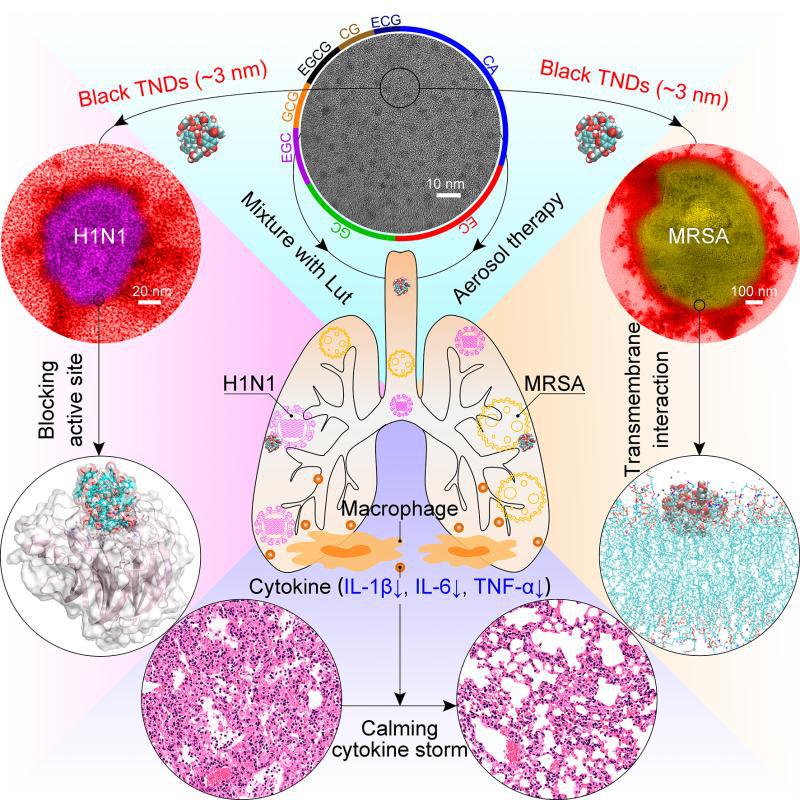Due to the complex interplay between pathogens and hosts, bacterial infectious disease has been the major cause of extremely high mortality, which poses a serious threat to human health around the world. Recently, Wu Shuilin, Professor from Tianjin University’s School of Materials Science and Engineering, released the latest study with his research team in Journal of Materials Science & Technology. In this study, the concept of Traditional Chinese Medicine Materials is proposed for the first time. Under this notion, Chinese herbal medicines can be processed into nanomaterials by means of materials science. The nanomaterials can eradicate viruses and bacterial pathogens without causing any tissue damage led by excessive inflammation so that bacterial infectious disease can be treated.

Based on Traditional Chinese Medicine Materials, the research team takes Chinese tea as the raw material and extracts Black Tea Nanodots (with an average length of around 3 nanometers) consisting of various kinds of catechin. Then, the antibacterial mechanism of methicillin-resistant Staphylococcus aureus(MRSA) is analyzed against Black TNOs. With the passage of time, TNOs gather in their large number around the surface of MRSA gradually and kill bacteria by affecting its amino acid metabolism and destroying its membrane structure.
At the same time, the research team also studies the antibacterial mechanism of H1N1 against TNOs. TNOs can form a dense hydrogen-bonding network with neuraminidase active sites of H1N1. This network can kill bacteria through the effective inhibition of H1N1 activity.
The research team also uncovers that the combination of TNOs and luteolin has an effective synergy to resist viruses and bacteria on the basis of drug compatibility screening. Luteolin is an ingredient of Chinese herbal medicine similar to TNOs in terms of molecular structure. Because of anti-oxidation, anti-inflammation, anti-bacteria and anti-virus qualities possessed by both TNOs and luteolin, the aerosol therapy after the combination of TNOs and luteolin can considerably reduce the death rate of mice during experiments. The therapy shows more advantages than reported clinical ones. The new strategy developed from traditional Chinese medicine materials may provide new R&D ideas and effective alternative solutions for the clinical treatment of bacterial infectious disease.
By Fu Xiao
Editor: Eva Yin